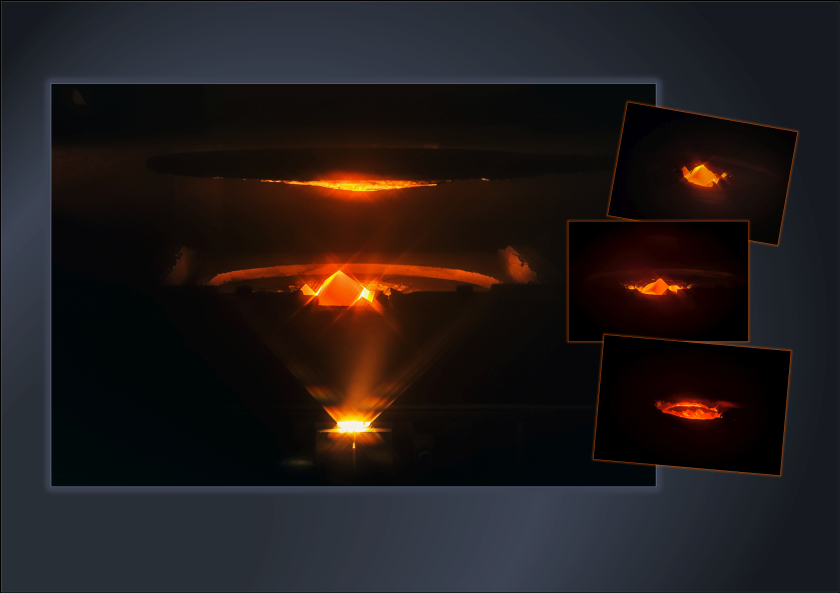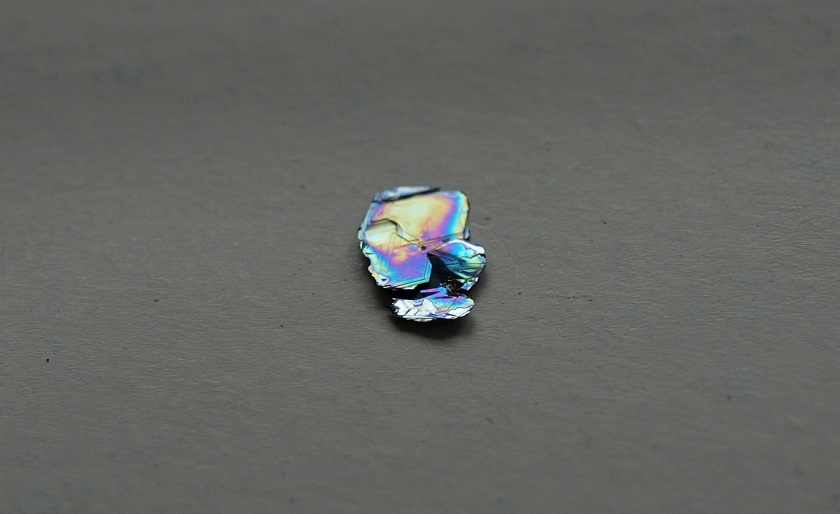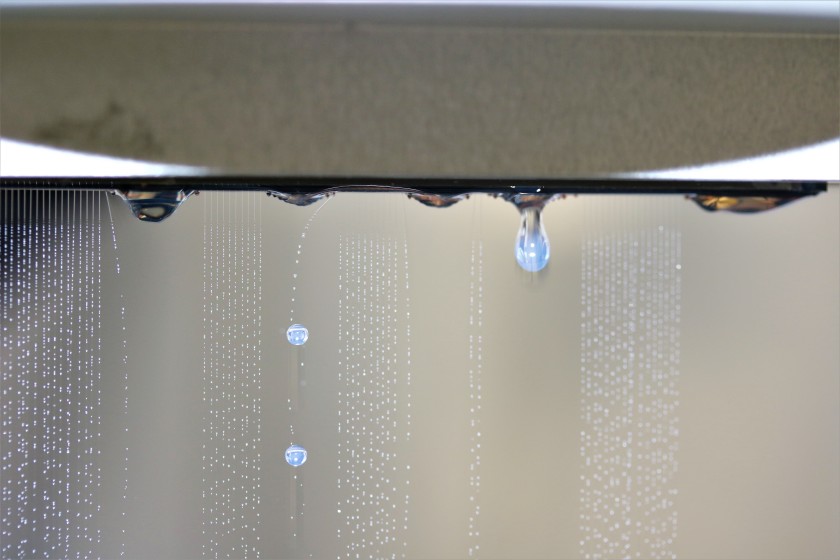1st place for "Glowing Silicon Lake" at the HZB photo competition for the Long Night of Science

1st place: "The interior of an electron beam evaporator in operation" © HZB/Martin Muske und Mona Wittig

2nd place: "Rainbow in a sample" © Mattia Mulazzi

3rd place: "Cleaning an inkjet printhead after printing" © Michael Hengge
More than 200 people have chosen their favourite pictures in the photo competition "Moments at the HZB" during the Long Night of Science. The winners have now been chosen, but the decision was extremely close.
With 54 points, the photo of Martin Muske and Mona Wittig wins first place. It provides a fascinating insight into the work of an electron beam evaporator in which small silicon cubes are melted.
Second place goes to Mattia Mulazzi. His picture "Rainbow in a sample" was only just behind with 52 points. What can be seen is a dazzling single crystal that appears very aesthetic and captivates its viewers.
Michael Hengge's painting wins third place with 50 points. Hengge photographed a print head of an inkjet printer during cleaning. The water drops in the close-up immediately catch the eye. The device is used to produce organic LEDs or other components.
The winners can look forward to a voucher for photo accessories worth 150 €, 100 € and 50 €. The photo competition was sponsored by the Freundeskreis Helmholtz-Zentrum Berlin e. V. (Friends of the Helmholtz Centre Berlin).
The three winning photos can be viewed during the week in the BESSY II foyer. All exhibited pictures can be found in the PDF.
About the competition:
All HZB employees were invited to submit a maximum of five pictures for the photo competition. There were a total of 53 submissions, from which a jury made a preselection. 32 photos were then hung outdoors during the Long Night of Science on 15 June. The photo competition was very popular, with many guests taking part and awarding up to three points for their favourite photos.
We would like to thank the Freundeskreis Helmholtz-Zentrum Berlin e. V., whose support enabled the photo competition to be announced.
(sz)
https://www.helmholtz-berlin.de/pubbin/news_seite?nid=20611;sprache=en
- Copy link
-
A simpler way to inorganic perovskite solar cells
Inorganic perovskite solar cells made of CsPbI3 are stable over the long term and achieve good efficiencies. A team led by Prof. Antonio Abate has now analysed surfaces and interfaces of CsPbI3 films, produced under different conditions, at BESSY II. The results show that annealing in ambient air does not have an adverse effect on the optoelectronic properties of the semiconductor film, but actually results in fewer defects. This could further simplify the mass production of inorganic perovskite solar cells.
-
14 parameters in one go: New instrument for optoelectronics
An HZB physicist has developed a new method for the comprehensive characterisation of semiconductors in a single measurement. The "Constant Light-Induced Magneto-Transport (CLIMAT)" is based on the Hall effect and allows to record 14 different parameters of transport properties of negative and positive charge carriers. The method was tested now on twelve different semiconductor materials and will save valuable time in assessing new materials for optoelectronic applications such as solar cells.
-
Record-breaking tandem solar cell now with precise scientific explanations
The world's best tandem solar cells, consisting of a silicon bottom cell and a perovskite top cell, can today convert around one-third of incident solar radiation into electrical energy. These are record values, especially for a potentially very low-cost technology. A team at HZB is now providing the scientific data for the first time and describing how this development was achieved in the renowned journal Science.
